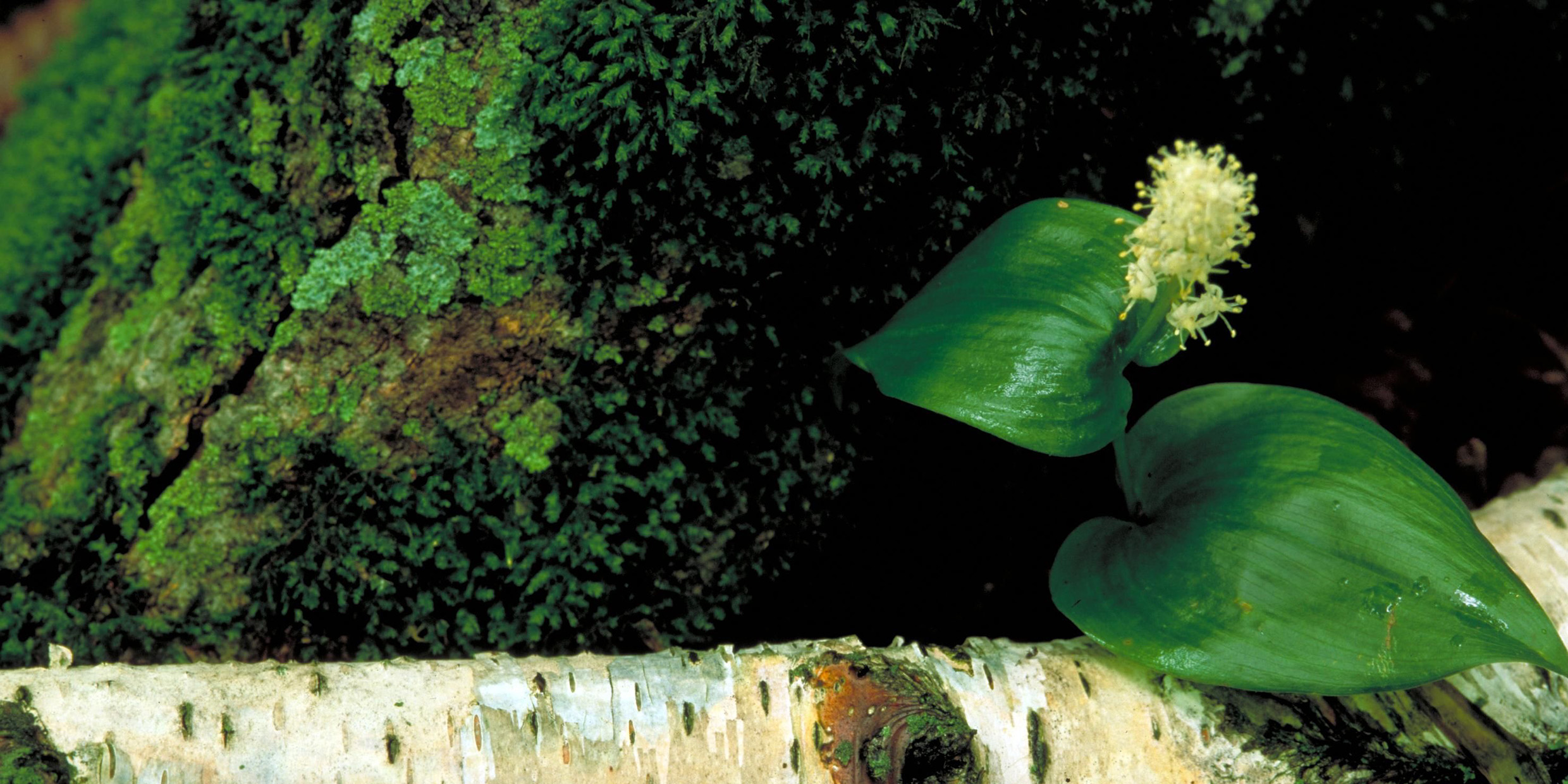Originally published 9 April 1984
There comes a moment in New England woodlands in the spring when up through last season’s brown leaves and matted pine needles comes the first green. Like a carpet unrolled overnight, suddenly the greedy leaves of the Canada mayflower are everywhere.
The Canada mayflower—sometimes called wild lily of the valley — insinuates a web of runners beneath the leaf litter, colonizing dark continents of the forest floor. From this hidden infrastructure of communication and transport, the plant throws up a thousand paired green leaves, one to the right and one to the left, like a beggar’s hands. In a few weeks there will be tiny white flowers and the plant will be busy with arrangements for the next generation. But for the moment, the business is pure energy. Capturing sunlight. Soaking up the rays.
There is not much sunlight on the woodland floor. The Canada mayflower must aggressively court its share. Hence the number of plants, the broad elf-sized forest of green leaves that so enchants the walker in the spring woods.
Reaching for the Sun, each leaf shoulders aside the detritus of last year’s decay. No law of physics is more basic than the law of entropy, the tendency of the universe to move toward disorder and death. But life bucks that tide, using available free energy when and where it can find it to build elaborate and elegant molecular mechanisms for staying alive, for metabolism, motility and reproduction. Staying alive has a color and that color is green.
Chlorophyll traps sunlight
All life on Earth (or almost all) fuels itself, directly or indirectly, on sunlight. Early in the planet’s history, life found a molecule — chlorophyll — that was particularly efficient at trapping and temporarily storing energy from visible light. Chlorophyll does not equally absorb all parts of the solar spectrum; if it did, plants would be black. The molecule absorbs red and blue light selectively, reflecting green. Spring is green because of that part of the solar feast which life sends back from the table.
The first living cells obtained their energy by fermentation, by breaking sugars down into alcohol and carbon dioxide (or similar products) and utilizing the energy that was stored in the broken chemical bonds. The cells scrounged the sugars from the environment, sugars that had been produced randomly by the Sun’s radiant energy. Life was living on borrowed time. The sugars in the seas were a limited resource. Organisms proliferated faster than the food supply. A great dying-out was in the offing.
And then came one of the peak moments in the history of life on Earth, the invention of photosynthesis. It happened about 3.5 billion years ago, within a few hundred million years of the origin of life. It is tempting to say “just in the nick of time,” but I have the sense that it may have been inevitable. Life was too clever not to solve the problem of its food supply and figure out a way to use the energy of sunlight directly.
Packets of energy
The first photosynthesizing organisms may have resembled the single-celled cyanobacteria, traditionally called blue-green algae. Special membranes in these cells contain chlorophyll which absorbs sunlight. The energy is passed along to the chemical factory which is the cell itself. Photosynthesis involves many steps, but the bottom line is that carbon dioxide and water are charged with sunlight to yield sugar and oxygen. The sugars are then available for fermentation, tidy packets of ready energy. With the invention of photosynthesis, life learned how to create its own food supply. No more living off the land. Life had gone on to subsistence farming.
There were problems, to be sure. The waste product of photosynthesis is oxygen, and oxygen tends to break down large molecules. Cells had to devise defenses against their own toxic waste. They also had to evolve defenses against the Sun’s ultraviolet light. There was no ozone in the Earth’s early atmosphere to screen out the Sun’s deadlier rays. Cells had to devise stratagems for gaining access to the Sun’s visible light, without being damaged by the ultraviolet.
With the invention of photosynthesis life learned how to plug into a star. The battle against entropy had been won. From that time onward, order on Earth could proceed at the expense of a greater disorder at the core of the Sun. The universe as a whole continued to run down, as it must, but on the surface of the Earth there spread a film of highly ordered matter of marvelous complexity and resourcefulness.
The tree of life
The first photosynthesizing organisms contributed their sunlight-trapping talents to the first true plants. Animals developed along a different branch of the evolutionary tree, and it now seems likely that you and I had no photosynthesizers among our ancestors. But the tree of life is a tree of interdependence. Without plants, animals would not survive. Plants are our food-producing link to our yellow star.



